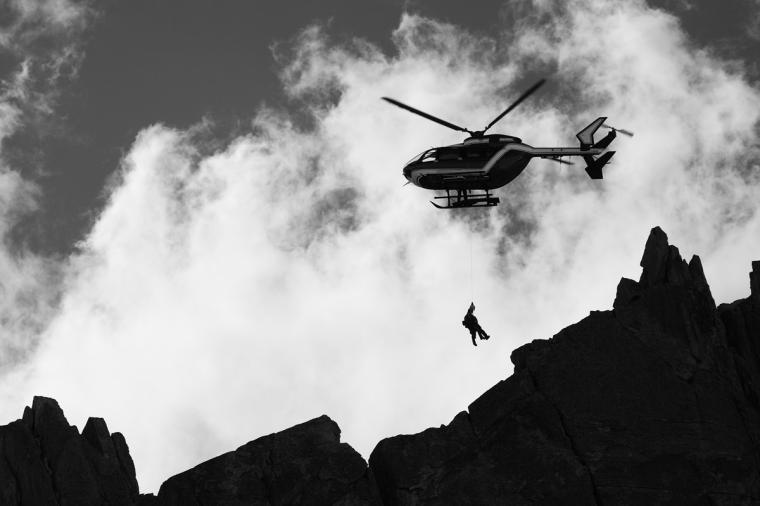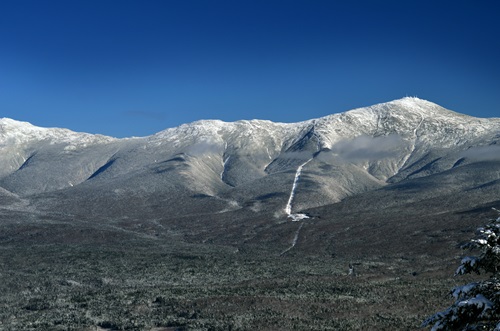
Try to summit a mountain, encounter a snowstorm, realize you’re out of your depth and… then what?
Those who value their skin generally call 911 (if they have service) and hope for a search and rescue (SAR) team to bail them out.
But rescues are dangerous (even for trained SAR personnel), they use resources and they’re just downright expensive. They’re stressful for employees, who often quit, citing burnout. And these days, states (and some individual parks) are clapping back at those whose antics put others at risk, and they're imposing heavier penalties.
If you need to know why, just consider the story told by New Hampshire’s Joe Lentini, a member of the area’s Mountain Rescue Service. Lentini, accompanied by his close friend and fellow MRS worker, Albert Dow, as well as others in MRS, were called out to rescue two men who had been out climbing but had become trapped by a snowstorm. In the course of trying to find the two men, Dow was killed in an avalanche.
“No one’s going to say he’s gone to a better place. I’m just going to feel it,” said Lentini. “I have nightmares. But life goes on. I’m never going to be over this. It’s just something that’s going to live with me.”
The climbers they had been seeking were ultimately rescued, but lost limbs to frostbite. One returned to climbing and is active in the development and use of prosthetic limbs.
In early 2023, New Hampshire (already the only state to bill for search and rescue operations) added another level of “or else” to its incentives: a measure to allow the state’s Fish and Game Department and Division of Motor Vehicles to suspend the drivers licenses of hikers who refuse to pay those search and rescue charges. Charges levied can vary; they may be a few hundred dollars to well into the thousands, depending upon the level of support the individual needs.
And despite the outcry from the outdoors community that this would make the state seem unfriendly to adventurers, it’s now the law.
According to Backpacker Magazine, “While a handful of states, including Hawaii and Maine, have laws that allow them to bill hikers and others for rescue services (if the states determine the people were acting irresponsibly), those rules are rarely, if ever, invoked. (Some counties in Utah also periodically charge visitors who require rescue, though there’s no statewide policy.) In contrast, New Hampshire authorities send a bill to roughly 6 percent of the hikers they rescue annually, alleging negligence or lack of preparation.”
New Hampshire, for its part, is overworked in the MRS department, adds Backpacker: “Over the past 10 years, calls for help have ballooned; as the Appalachian Mountain Club wrote in a blog post in 2020, the department’s annual expenditure regularly exceeds its paltry SAR budget, forcing it to dip into money that could have been used for equipment and training.”
One of the most recent articles in Backpacker noted, “On Monday, February 20, the New Hampshire Department of Fish and Game published its account of a successful life-saving mission that occurred amid bone-chilling conditions on Mount Washington on Saturday, February 17. A 22-year-old hiker named Cole Matthes called 911 saying he’d fallen and injured himself while traversing Ammonoosuc Ravine, a rugged section of the 6,200-foot peak. Since Matthes was located in a tricky area, rescuers asked the owners of the Mount Washington Cog Railway to fire up the historic steam engine and haul them uphill to his approximate location. Eventually a team found him hunkered down in an emergency shelter.”
The 11-person team that went out in search of Matthes endured single-degree temperatures, 90 mph winds and wind chills of -52 degrees Fahrenheit. The report from New Hampshire Fish and Game cites the poor choices Matthes made which put not only himself but numerous others at risk. (And while the report did not specifically mention it, it is likely Matthes has since received, or soon will receive, a hefty bill from the state, which he will have to figure out how to pay if he values his driver’s license.)

Social media and the 24-hour news cycle have resulted in such incidents having a far higher profile than they would have had decades ago. Unfortunately, say SAR personnel, even the blame-and-shame potential doesn’t seem to be teaching people anything.
On the West coast, California’s answer to Mount Washington is Mount Baldy. Backpacker notes, “A 22-year-old hiker named Lifei Huang died on the mountain, and three others were rescued. Huang’s death generated more national attention, but even that wasn’t enough to educate everyone. On February 14, just two days after Huang’s body was recovered, rescuers had to save six hikers from Mount Baldy after they lost the trail beneath snow and ice.”
In every case, on every mountain, it is a constant battle between the would-be outdoors enthusiasts (who have no idea how unprepared they are) and the mountain (which doesn’t care).
In 2022, a North Carolina hiker who ignored weather reports of an oncoming winter storm and set out without proper equipment or provisions on the 30-mile Art Loeb Trail in Pisgah National Forest, and who then had to be rescued, frustrated authorities, as well as the six-person rescue team who had to go out on snowshoes to find him.
Just as it is in New Hampshire, the Colorado SAR industry is on the brink of collapse, being stretched far beyond its capacity by the ever-growing number of errant hikers, trail runners and mountain bikers who far outpace the amount of professional teams available to get them out of tight spots, according to a recent report.
Hikers and climbers in the USA are often lured by the history of an area. Robbers Roost, for example, is the nickname given to a canyon and surrounding area in southern Utah where the infamous outlaw Butch Cassidy and his “Wild Bunch Gang” would often meet up and hide out after their big heists in the late 1800s and early 1900s. People still go there today for a variety of reasons: some to enjoy the beauty, some to challenge themselves with the terrain and some with the hope of finding treasure left behind by the outlaws (there’s still quite a bit of it that is unaccounted for).
But make no mistake – it is dangerous. One of the popular destinations for slot canyons in the area, Bluejohn was the scene where the real-life struggle of Aron Ralston took place, in which he was forced to amputate his own arm after becoming pinned in a slot canyon by a fallen rock. The movie, “127 Hours,” chronicled his experience – although as seen in the link, many criticize him for taking what they view as unnecessary risks.
“What's kind of irritating is that rescuers have to go out and deal with those types of situations — a lot — and most of the time they're preventable,” said Rex Tanner, commander of Grand County Search and Rescue, a volunteer organization that is responsible for 3,600 square miles (9,324 square kilometers) near Bluejohn Canyon. His group participated in 80 rescues in one year alone and was on call to aid in Ralston's rescue.
And while Ralston’s story had a triumphant ending, not all those who set out to challenge themselves make it back.
Officials liken those ill-fated treks to the problems caused by so-called armchair treasure hunters in the U.S. wilderness – including one incident, according to the Washington Post, in which a man was ordered to repay the $2,880 that it cost rescuers to save him when he got lost years earlier searching for the Forrest Fenn treasure he believed was hidden in Yellowstone National Park. He was also banned from entering Yellowstone for five years. (Fenn’s treasure was finally found in Wyoming in 2020.)
There have even been articles detailing who is the most likely to call for help from SAR teams.
Social media plays a role in making the outdoors inviting to those with no experience, and Instagram users are among the worst offenders, according to this article.
“The reality of backcountry Instagram content is like an iceberg,” noted the writer. “You see something enticing right away that looks beautiful and cool and attention-grabbing on the surface, but there’s a lot lurking below.”
And what lurks below can be dangerous to the unknowledgeable.
In early 2020, the pandemic drove many regular gym-goers onto hiking and mountain biking trails where, despite their levels of fitness, they were unprepared for late winter and early spring conditions, which are always subject to quick changes, posing dangers such as snowstorms, frigid temperatures, mudslides and, yes, avalanches. Additionally, they were unprepared for bears, snakes and other wildlife.
Oh, and speaking of bears, more than a few trails had to be closed to the public because of the uptick in social media users who wanted to take so-called bear selfies.

